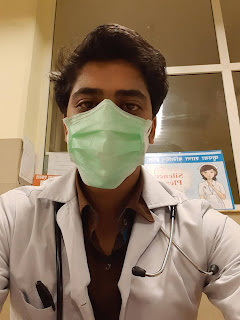WORKING IN EMERGENCY AS AN INTERN

Visit on Youtube Good morning. As always, my day starts with some reading. Today I am studying about some common emergency conditions like Hypoglycemia, Acute exacerbation of COPD, etc. Compared to night studier, Studying in morning hours when you have energized mind after a good night sleep is beneficial as the brain is better able to focus. You get to read in day light which keeps you alert. Silent environment and a break from social media add up your concentration too. Hello everyone. I am Saroj, an intern doctor at TU Teaching Hospital in Kathmandu. Today I am posted to Emergency Red area. Lets get started. We have a duty for 12 hours in a day. I will have my morning breakfast and today I am having bread omlet and tea. It is always necessary that you keep your glucose content adequate during your working hours so that you don't feel lethargic too quickly. I am out of my hostel and it is too sunny. Our general approach is that whenever patient arrives, we resuscitate them, do
